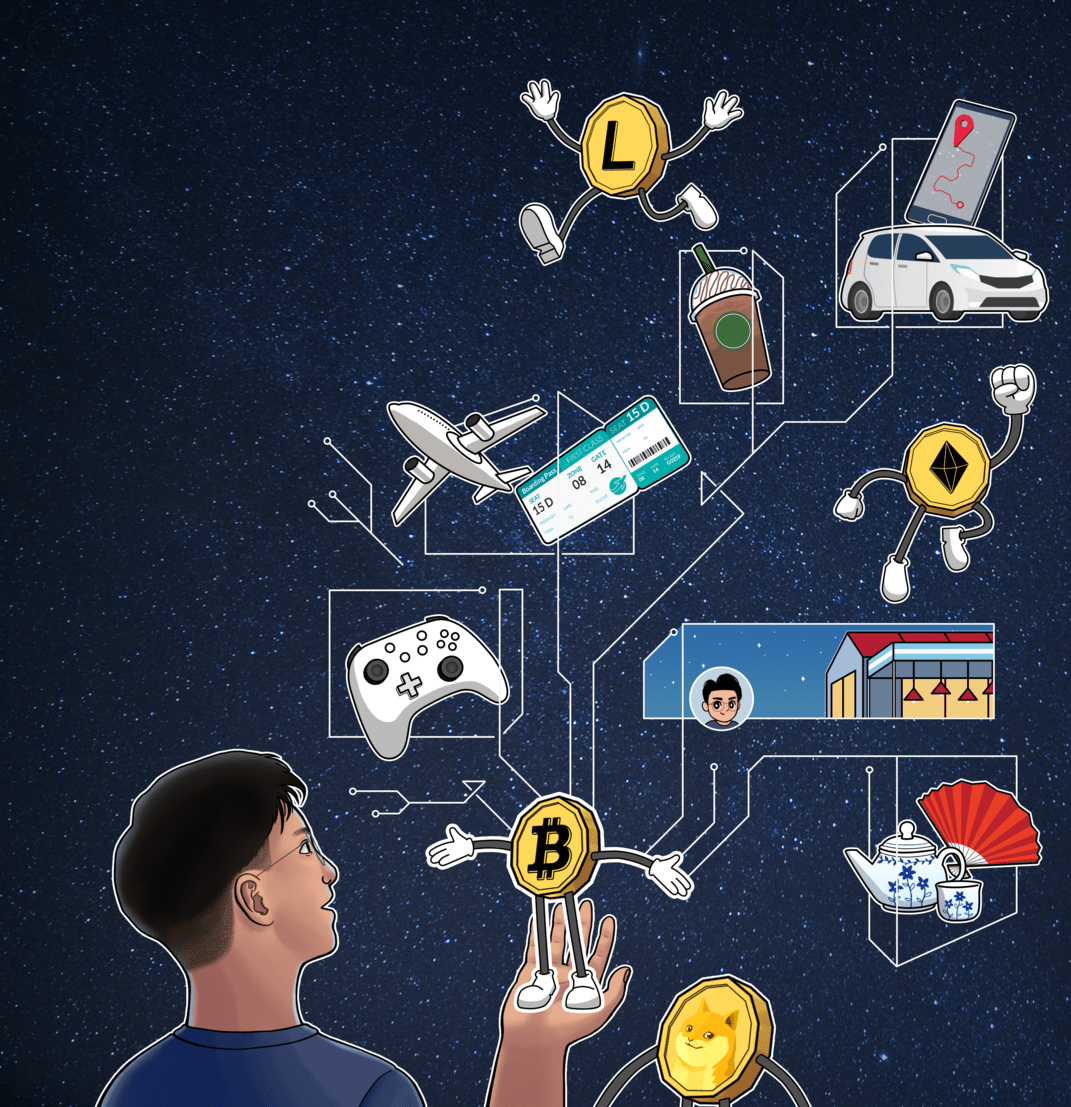HEY! student writer Sergul Toh shares his journey into the controversial currency that has sparked a global frenzy
by Sergul Toh / Illustration by Vivian Lim

You may have read stories about people making millions off investing in cryptocurrency like Bitcoin. But just as easily, a bad investment could have you eating solely plain rice (or less) for quite some time. The crazy price fluctuations of cryptocurrencies have clearly divided people around the world, much like the durian – you either love it, hate it or forget that it exists.
Whether you are baffled about Bitcoin, or curious about the crypto-craze, here is your introduction to the controversial currency.
What is cryptocurrency?
Simply put, it is a new form of digital currency. Today, thousands of such virtual currencies exist, garnering as much hype as notoriety due to their speculative nature. The first ever cryptocurrency, Bitcoin, was developed by someone who went by the name of Satoshi Nakamoto.
To date, nobody knows who Nakamoto is. Some even suspect it is a group of individuals behind the pseudonym. Don’t we all love a good conspiracy theory?
The birth of cryptocurrency
It began with a simple, noble intention of decentralisation: removing banks as the middlemen for money transactions, and transferring power from big institutions to the people. Imagine being able to PayLah! your friend without the need for DBS Bank.
The concept was born in the wake of the 2008 financial crisis, when many could not withdraw their hard-earned savings and precious investments from the bank. Bitcoin, Nakamoto’s brainchild, sought to change that.
My older brother was the one who shared the technology and ideology behind Bitcoin with me. It was at the beginning of the pandemic. Prices were tanking across the markets, and he and his friend had bought Bitcoin during that massive dump. I decided to dip my toes into cryptocurrency as well.
How does it work?
To buy cryptocurrencies, you’ll need to open an account with a cryptocurrency exchange. There are apps for this in the App Store and Google Play. Once you have set up your exchange account and your crypto wallet (which is like a GrabPay wallet but for crypto), you can transfer real money to obtain cryptocurrencies such as Bitcoin, also known as “BTC” and the most popular cryptocurrency right now.
Cryptocurrencies can be pretty daunting for the uninitiated, especially when it comes to learning about the utility of a coin and its potential. I did my research and watched many videos that helped to break down the information in an interesting manner – what the coins do, what problems they try to solve, and how new ones are different from their predecessors.
I have profited and seen my investment multiply a few times, but I must stress the importance of being prudent and doing your research. The process of buying cryptocurrencies, in hindsight, is scarily easy. Lured by the prospect of making money, people jump into it without realising that thousands of things could go wrong, such as scams and high transaction fees. Over time, I have learnt that being critical and sceptical is very important.
“Lured by the prospect of making money, people jump into it without realising that thousands of things could go wrong, such as scams and high transaction fees.”
What can I buy with it?
While most people invest in cryptocurrencies as they would in other assets, you can use the currency overseas to buy goods and services, from air tickets to even a Starbucks cuppa. In El Salvador, Bitcoin is even considered legal tender.
Most of the items I have bought are crypto-related, such as a few non-fungible tokens for gaming and visuals for beautifying social media profile backgrounds. I’ve also bought illustrations in the NFT space related to Asian heritage and culture. In the real world, I know that some companies like RYDE accept Bitcoin as a payment method, but I haven’t tried it.
(Psst, for those wondering what non-fungible tokens, or NFTs for short, are, they are cryptocurrency assets that record the ownership of a digital file such as an image, video or text. Anyone can create, or “mint”, an NFT, and ownership of the token does not usually confer ownership of the underlying item.)
READ MORE: NTU student and his team make nearly $1.4 million in the NFT market
Should I invest in cryptocurrency?
Unlike in countries like Russia, where a ban on the use and mining of cryptocurrencies has been proposed, Singapore adopts a “regulate, not ban” approach, which is good for investors.
At the same time, the Monetary Authority of Singapore has recently stepped in to warn of the highly risky and speculative nature of cryptocurrency, making it an unsuitable form of investment for the general public.
I would say that as with all new commitments, always DYOR – crypto-speak for “do your own research” – before taking the plunge!

This story was published in the Mar-May 2022 issue of HEY!. To read it and other stories from this issue in print, click here.

